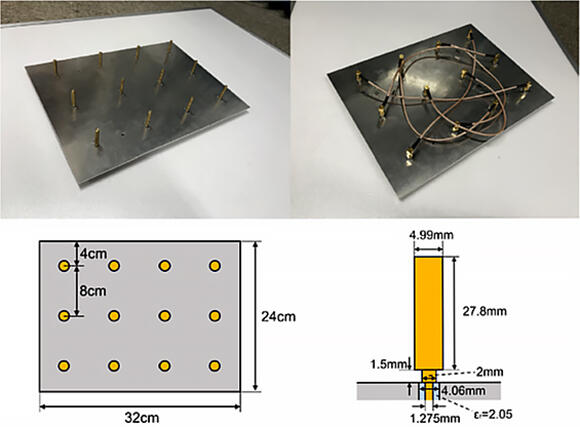In collaboration with Associate Professor Atsuhiro Nishikata of Tokyo Institute of Technology, NTT has experimentally confirmed the world's first two-way communication using the Van Atta array, a type of retroreflective array.

Provided by NTT
When using higher frequency bands for radio communication, such as millimeter or tera-hertz waves, propagation loss of the signal is large which means it is necessary to use array antennas to accurately control directionality of the wave. These antennae provide accurate directionality towards the communication destination. Due to these requirements, when the communication destination moves, a signal processing and directivity control mechanism is required for tracking the antenna directivity. Retroreflective arrays, however, have the unique characteristic of reflecting the wave back to its source without control. Therefore, if the retroreflective array can be used for wireless communication, the beam selection function (or the direction-of-arrival estimation function of radio waves) and the antenna directivity control function, which were necessary in conventional radio base stations and terminals, could possibly be eliminated. This has the potential to simplify wireless devices and reduce power consumption.
There are various types of such retroreflective arrays, but the Van Atta array is the smallest and has a simple configuration. Therefore, these experiments were performed using the Van Atta array. Using this type of array, a communication experiment between "Station A" and "Station B" was carried out. A prototype Van Atta array was constructed using a 3 × 4 element monopole antenna and installed on the station B end.
Information was then delivered to station B using radio waves (A → B) transmitted from station A to the Van Atta array on the station B end. Station B receives the information from station A, and by superimposing the information in the course of retroreflection, information transmission (B → A) to station A becomes possible. Station A, which receives the signal from station B, eventually receives the signal transmitted by itself superimposed on the signal (information) added by station B. Thus, by eliminated the information (A → B) originally loaded at station A from the received signal, the information sent by radio B can be retrieved. It was experimentally confirmed that the information from station B can be restored in this manner in station A.
In the future, both parties plan to carry out a practical application study, such as the implementation of this technology to a wide range of wireless devices.
This article has been translated by JST with permission from The Science News Ltd.(https://sci-news.co.jp/). Unauthorized reproduction of the article and photographs is prohibited.




